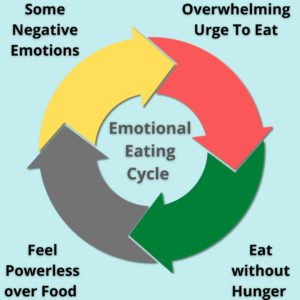Most obesity and overweight issues stem from not eating right and eating when not Actually Hungry. Once we learn to listen to our body and its hunger cues and differentiate between Actual Hunger and Projected Hunger we are able to make informed choices about why we are eating what we are eating. Thus, making us more alert towards our eating habits and leading us towards better health.
Let us learn to differentiate Actual Hunger from Projected Hunger.
- Differentiate Thirst from Hunger
- Recognize Habitual Eating Patterns
- Watch Emotional Eating
1. Differentiate Thirst from Hunger
Around 60%-70% of the body weight is water. We must take in enough fluids and foods with higher water content to meet our body’s requirements. Drinking less water than what our body needs can lead to dehydration. When we actually feel thirsty we are already mildly dehydrated. Some of the signs of dehydration are:
- Dry skin
- Feeling sluggish
- Dry-eyes
- Increased heart rate
- Headache
- Nausea
- Dizziness
If someone has the above symptoms, it might be a good idea to increase water intake. Even mild dehydration can cause hunger-like symptoms. Symptoms like Headache, dizziness, and sluggishness can be signs that the body needs water and instead, we might mistake it to be Hunger. One can always drink a few glasses of water especially in between meals so that we do not get confused between the body’s need for water and the body’s need for food.
2. Recognize Habitual Eating Patterns
Once you have learned to drive a car you do not need to put in the effort to drive, it starts to come naturally, you do not look at the brakes, clutch, or gears. All motions are unconsciously happening. Similarly, when we repeatedly follow an eating pattern it becomes a habit and we do it without consciously realizing that we are eating out of a habitual pattern even though we might not be actually hungry.
Habitual Eating Checklist
Here is a checklist to help you identify if there are any habitual eating patterns. Do you eat or drink even when not hungry for any of the reasons mentioned? Put a tick against all that apply!
- When you are Bored!
- Food is there in front of you.
- You are tired!
- It is free or available cheap!
- You suffer from clean plate syndrome!
- It is a special occasion!
- You struggle to say “NO!”
- Night-time equals snack time
- When watching TV
- While working or playing on electronic devices
- While reading or studying
- Because it is time to eat
3. Watch Emotional Eating
Emotional Eating usually happens when we have an overwhelming urge to eat while experiencing strong emotions.

It is a cyclic process. Every time one experiences a strong emotion mostly negative like anger, stress, sorrow, etc…one starts to crave certain kinds of food and has an overwhelming urge to consume that kind of food. Temporarily Emotional Eating can fix the mood and one might start to feel a little better but it is short-lived. It is usually followed by guilt and self-condemnation.
| Actual Hunger | Emotional Hunger |
| It builds up slowly over time | It comes about suddenly or abruptly |
| Desire a variety of food groups | Crave only certain foods. |
| One feels the sensation of fullness and takes it as a cue to stop eating. | One may binge on food and not feel a sensation of fullness. |
| We have no negative feelings about eating. | We feel guilt or shame or indulge in self-condemnation about eating. |
| Happens at regular intervals. | Mostly associated with strong emotions. |
Emotional Eating Checklist
Do you eat or drink even when not hungry for any of the reasons mentioned? Put Tick marks against all that apply.
- When you are feeling lonely
- After suffering an emotional setback
- When you are thinking negatively about something or someone
- After an argument or a fight with someone
- Experiencing sadness or sorrow
- Undergoing Stressful situations
Instead of indulging in Habitual Eating and Emotional Eating, one needs to work towards resolving the underlying issues. The first step is identifying and accepting that one is indulging in Habitual Eating and/or Emotional Eating.
Awareness precedes Correction. Once the pattern is identified there are ways to deal with these patterns and resolve the same.
